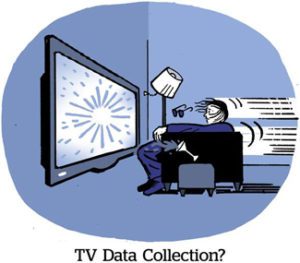Lots of people are talking about addressable TV.
“Data-driven linear,” though? Not so much.
But despite the fact that data-driven linear (DDL) doesn’t get as much attention as its somewhat sexier addressable cousin, it’s becoming an increasingly popular choice for linear advertisers attempting to make more informed media buys.
Addressability has become a hot topic in the TV industry because it refers to the ability to serve an ad at the household level, as opposed to more traditional one-to-many delivery against basic demos and program guides.
But as nifty as that sounds, addressable TV has a scale problem. Data-driven linear, however, can help advertisers move away from demo-based buying without sacrificing scale.
But what exactly is DDL?
Defining terms
Data-driven linear refers to the process by which advertisers use automated tech (and in some cases data) to make and inform their linear TV ad buys, including programmatically.
DDL isn’t addressable. It’s a mechanism for one-to-many distribution. But it’s an important stepping stone toward introducing “some sense of identity” into linear TV buys, Ryan McConville, EVP of ad platforms at NBCUniversal, told AdExchanger following the broadcaster’s Currency Council announcement earlier this month.
DDL allows advertisers to target more custom audiences than age and gender demos, such as cat owners, for example, or pickup-truck drivers.
Because DDL incorporates data as part of a linear buy, it’s become a popular first step for traditional TV buyers trading in panel-based ad measurement to experiment with targeting.
NBCU, for example, overlays custom audience segments with set-top box viewership data and automatic content recognition (ACR) to index which types of channels particular custom audience segments are most likely to be watching at any given time.
ACR data is particularly attractive to measurement providers and programmatic platforms because they can use it to more directly tie audience viewership data to programming. Doing so gives linear buyers a better sense of where they should, well, buy.
Tremor International, for example, has been making acquisitions to support addressable TV buying, including through its purchase of CTV ad server Spearad last year. But its linear planning tools focus heavily on DDL.
In short, DDL is more about “indexing” custom audiences across channels than targeting impressions to individual households, McConville said.
For instance, DDL is handy for running local spots against parameters beyond geography, said Nicolle Pangis, CEO of Ampersand, a TV ad sales consortium jointly owned by Comcast, Cox and Charter.
“DDL isn’t one-to-one addressable – but at least you’re getting more targeted,” Pangis said.
Be scaled or be square
But advertisers like DDL because it can boost scale by reaching a high volume of viewers with a single buy.
The scale of linear addressable inventory is modest by comparison, because advertisers are attempting to target specific households watching individual ad spots in a pod rather than buying a scalable audience indexed against certain networks and dayparts, McConville said.
Addressable TV buying can also easily take targeting too far. An advertiser, for example, might inadvertently miss out on viable customers by trying to reach audience segments that are too precise – such as, say, women under 30 who also are in the market to adopt a cat.
But that same advertiser could increase their campaign reach exponentially by targeting against a broader audience, such as all women under 30 or anyone looking for a cat friend.
“There is such thing as too much targeting,” Pangis said.
In addition to the scale issues, the availability of addressable TV inventory itself is also somewhat scarce. Currently in the US, once carriage agreements with cable providers have been hashed out, only roughly two minutes of ad inventory per hour remains for addressable TV buys, said Rex Du, a business professor at the University of Texas at Austin, speaking at the Advertising Research Foundation’s attribution summit in November.
Addressable TV is also expensive. Based on the university’s research, the cost of an addressable ad unit is “three to five times higher than linear [inventory] that can only be targeted at the program level,” Du said.
And because publishers typically don’t release all that much data about the inventory they’re selling, it’s hard to justify paying a premium for addressable.
Addressable TV’s current limitations make DDL a more enticing option for buyers, and agencies would do well to encourage their advertisers to buy in that way, said Tracey Scheppach, CEO of the agency Matter More Media, speaking on the subject earlier this month.
What about attribution?
Still, the ultimate goal is for TV advertising to get as addressable as possible.
The more precisely targeted an ad, the better chance it has of driving business outcomes, including after the initial conversion, such as repeat purchases, said Damon Mercadante, VP of digital marketing at Paramount’s streaming service, Paramount+, speaking at the ARF summit. One major advantage of addressable TV is that TV viewing data can be merged with additional first-party data, not just information about programming, which enables ad targeting based on past customer behaviors, including purchase history, Du said.
But attribution is yet another pain point for advanced TV. Conversions typically occur on a second screen, which is why attribution for TV ads often relies on data modeling.
The University of Texas’s research, for example, used a form of regression analysis to compare ad exposures and viewership data with purchase histories to create models that predict how many incremental purchases addressable TV could drive based on where an ad is placed.
For example, the models can measure whether the same ad drives more or better outcomes if it’s placed in the first or second half of a show, then make a recommendation based on that information.
The best way to optimize ad exposures, Du said, is to tie those exposures to a customer’s purchase propensity.
In the meantime, though, as addressable linear works through its growing pains, Pangis said, DDL is a step in the right direction toward audience-based buying.




















